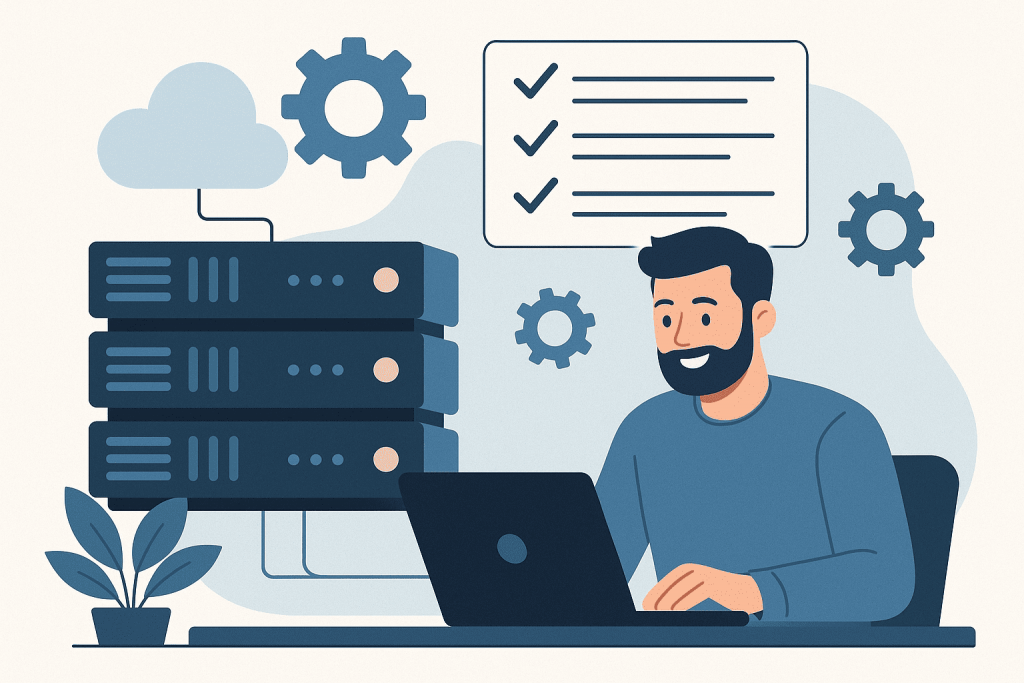
Launching a startup is always a mix of ideas, speed, and technology. At the early stage, it’s not enough to build a product — you also need to ensure its stability. The server is the foundation of any online project, and its configuration determines whether your website can handle the first wave of users, how fast pages will load, and how easily the system can scale in the future. A wrong choice can cost time, money, and customer trust — so it’s worth approaching this decision carefully.
Tip №1: Power isn’t everything
Many beginners believe that a more powerful server is always better. In reality, excessive resources at the start are just wasted money. For an MVP (minimum viable product), stability matters more than raw speed. If your app or website currently serves only a hundred users, you won’t notice the difference between two and sixteen cores. The key is to choose a balanced configuration that can be easily expanded as the project grows.
Tip №2: Choosing between shared hosting, VPS, and a dedicated server
The type of server is one of the most important decisions for a startup. Shared hosting suits simple websites with low traffic but comes with limitations. VPS provides full control over the system — you can install custom software, configure security, and optimize resource usage. A dedicated server is ideal once your project grows and requires maximum performance. At the start, VPS is usually the best option — flexible, affordable, and scalable.
Tip №3: Focus on real needs, not ambitions
Before ordering, be honest about what you actually need. If your startup is a small SaaS platform or a corporate website, you don’t need dozens of gigabytes of RAM. It’s far more important to understand the type of workload: a database with constant queries or a web app with traffic spikes. Only then can you properly allocate CPU, RAM, and disk space.
Tip №4: Disk type matters more than numbers
Modern servers offer several storage types: HDD, SSD, and NVMe. For startups that value speed and stability, NVMe is the top choice — it provides instant data access and minimal latency even under heavy load. However, if your project deals with large volumes of archival data, HDD may be a cost-effective option for backups or logs.
Tip №5: Backups aren’t optional — they’re mandatory
Even the best servers can fail, so backups should be part of your strategy from day one. When choosing a server, check whether the provider supports automatic backups and how quickly data can be restored. For startups working with customer data or payment systems, this can be a decisive factor.
Tip №6: Security starts before launch
Many young projects postpone security setup “for later,” but this often leads to data loss. Your server should support modern protection tools — firewalls, SSL certificates, and isolated environments. If you’re using a VPS, make sure you have root access and the ability to install security monitoring tools.
Tip №7: Data center location matters
The closer your server is to your users, the faster your website loads. If your audience is based in Ukraine, it makes sense to host the server in a local or European data center. A few dozen milliseconds of latency may seem minor, but for e-commerce or streaming services, it’s noticeable.
Tip №8: Flexibility and scalability
Startup growth is unpredictable, so your infrastructure should scale easily. Choose a provider that allows quick upgrades without downtime — for example, moving to a plan with more RAM or CPU cores without switching to a new server. This saves time and ensures smooth operation during growth.
Tip №9: Monitoring and support
In the first months after launch, it’s crucial not only to have a server but also to understand what’s happening with it. Monitoring panels help track load, memory usage, system temperature, and other parameters. If you choose a VPS, check whether the provider offers 24/7 support — ideally, so any issue can be resolved instantly.
Tip №10: Balance between cost and stability
The key is finding the right balance between price and reliability. A cheap server might tempt a startup on a tight budget, but frequent downtime will erase any savings. Investing in a stable infrastructure is an investment in your company’s future. It’s better to choose a mid-range plan with easy upgrades than overpay for unused resources.
Conclusion
A well-chosen server configuration isn’t just a technical matter — it’s a strategic decision. It determines how fast, secure, and scalable your product will be. Start with a reasonable minimum but design your system to grow easily. The success of a startup often depends not on the most powerful hardware, but on smart technical choices from the very beginning.

Leave a Reply